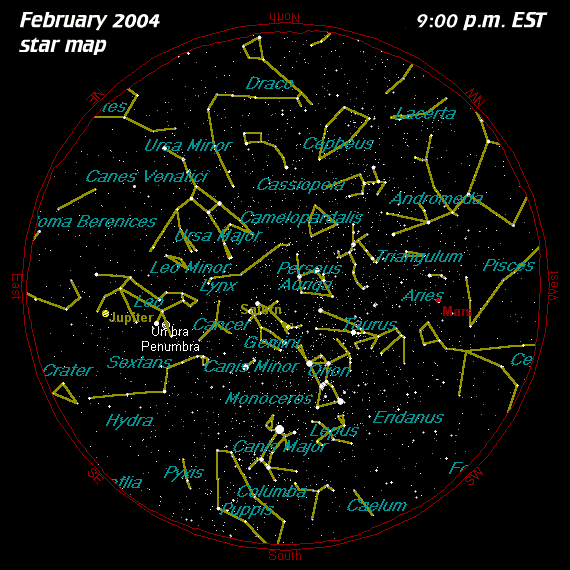



![[Moon Phases]](../moonphases/2004-02-phases.jpg) |
|---|
![[Polar Dust Storms on Mars]](2-04-dust-storm.jpg) |
|---|
| Martian Dust Storms result from the differences in temperature between colder air coming off the polar cap mixing with the air over much warmer ground. Our mid-latitude weather patterns are the result of similar effects as Earth's atmosphere equalizes its temperature inequalities. Mars Global Surveyor image... |
![[Orion and Taurus]](2-04-winter-group.gif) |
|---|
| Look South at 7 p.m. to see the Winter Group constellations of Orion and Taurus. |
![[Orion Nebula]](2-04-orion-nebula.gif) |
|---|
|
Above: John Sefick of Albuquerque, NM masterfully photographed the Orion Nebula from Siding Spring Observatory in Australia in February of 2001. Below: A Hubble Space Telescope composite photograph was created near an area where stars are trying to form in the Orion Nebula. |
![[Star Formation in the Orion Nebula]](2-04-orion-nebula-center.gif) |
|---|
![[The Heavenly G]](2-04-heavenly-g.gif) |
|---|
| The "Heavenly G" covers a huge area of the sky which cannot be seen in one field of view of the eye. You will have to move your head to encompass all of its grandeur. The bright waxing gibbous moon is positioned on the map for Wednesday, March 3. It will block all but the brightest stars. The moon is full on March 6. Gary A. Becker map... |
 |
